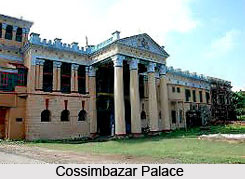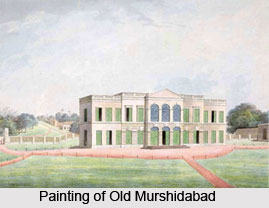 History of Cossimbazar can be traced back with the beginning of the 16th Century. Though with the beginning of the 17th Century, Bengal Sultanate began to flourish in the hands of Murshid Quli Jafar Khan and Alivardi Khan, later the Sultanate declined in the hands of British East India Company during the rule of Siraj ud daullah in the Battle of Plassey (1757).
History of Cossimbazar can be traced back with the beginning of the 16th Century. Though with the beginning of the 17th Century, Bengal Sultanate began to flourish in the hands of Murshid Quli Jafar Khan and Alivardi Khan, later the Sultanate declined in the hands of British East India Company during the rule of Siraj ud daullah in the Battle of Plassey (1757).
It was the matter of great importance when Murshidabad (now Murshidabad District) was established by the Bengal Sultanates. For the first time, European traders like the traders of French East India Company and British East India Company set up factories in Cossimbazar or Kasim bazaar. From that time onwards, it became the prominent place in Bengal. After the ruins of Satgaon by the silting up of the mouth of the Saraswati River it gained a position, as the great trading centre of undivided medieval Bengal, which was not challenged until after the foundation of Calcutta or Kolkata (combination of three villages namely Govindapur, Sutanati and Kalikata).
In the year 1658, the first English agent of British East India Company was established at Cossimbazar, and in 1667 the chief of the factory there became an ex officio member of council. Cossim bazaar became the prominent place in business of later medieval era.
 In English documents of this period, and till the early 19th century, the Bhagirathi River was described as the "Cossimbazar river", and the triangular piece of land between the Bhagirathi River, Padma River and Jalangi River, on which the city stands, as the island of Cossimbazar or Kasimbazar.
In English documents of this period, and till the early 19th century, the Bhagirathi River was described as the "Cossimbazar river", and the triangular piece of land between the Bhagirathi River, Padma River and Jalangi River, on which the city stands, as the island of Cossimbazar or Kasimbazar.
The proximity of the factory to Murshidabad, the capital of the Independent Nawabs of Bengal, while it was the main source of its wealth and of its political importance, exposed it to a constant risk of attack. Thus in 1757 it was the first East India Company factory to be taken by Siraj-ud-dowlah, the last Independent Nawab of Bengal; and the resident with his assistant Warren Hastings were taken as prisoners to Murshidabad.
At the beginning of the 19th century the city of Cossimbazar still flourished; as late as 1811 it was described as famous for its silks, hosiery, koras and beautiful ivory work. However, its once healthy climate of Cossimbazar gradually worsened and probably because of endemic malaria, the area of cultivated land round it shrank drastically.
The jungles of Cossimbazar took its place, and in 1813 its ruin was completed by a sudden change in the course of the Bhagirathi River. A new channel formed 3 miles from the old town, leaving an evil-smelling swamp around the ancient wharves. Of its splendid buildings the fine palace of the Maharaja of Cossimbazar alone remained, the rest being in ruins or represented only by great mounds of earth. The first wife of Warren Hastings was buried at Cossimbazar, where her tomb with its inscription still remained in the early 20th century. Now, the tomb of Lady Warren Hasting is one of the most important tourist attractions along with Cossimbazar Palace.



















